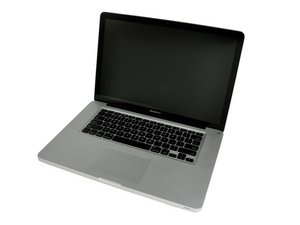I was asked to transplant a client’s 4TB HDD from a 20” iMac (early 2008) to a 21.5” iMac (mid-2011) and was concerned about compatibility. My client wanted to upgrade from OSX 10.11 (El Capitan) to OSX 10.13 (High Sierra), as well, and I saw this as an opportunity to experiment.
I reasoned that, if any part of the device/driver system wasn’t happy after the transplant, I could simply perform the OS upgrade (from external media, if the system really wouldn’t run properly). I figured that the upgrade process would install whatever drivers were determined appropriate by the installer, resolving any hardware/driver issues. In the meantime, I could observe the effects of performing such a transplant. (If you don’t intend to upgrade your OS version, keep reading anyway; this post is still relevant to you.)
I installed the hard drive in the later iMac and booted up; not a problem in the world. The system performed perfectly. I ran many applications and performed a number of hardware-intensive operations without a single hiccup.
Then I performed the High Sierra upgrade, using the installer file in the Applications folder to perform the upgrade. It went as smooth as silk.
Obviously, there are limits to this reasoning; this transfer was from iMac to iMac and within 4 years of each other. They both used the same graphics card, for example. But whether your two devices are compatible or not, there is a way to force the installation of the drivers and software appropriate to your destination machine. It is this:
1) Check to make sure that the destination device (the device you are moving the hard drive to) is compatible with the MacOS version you want to end up with. You can follow this link to compare device/OS compatibility, using the serial number of the device: https://everymac.com/ultimate-mac-lookup...
2) Having verified its compatibility (Step 1), download the installer for the operating system you are going to wind up with. DO THIS EVEN IF YOU ARE NOT UPGRADING YOUR OS VERSION. Follow this link to locate and download older MacOS versions: https://www.macworld.co.uk/how-to/mac-so...
3) Copy the downloaded installer into the Applications folder on the hard drive you’re going to move AND create an external-media installer (a DVD or USB drive), just in case. Follow this link for media creation directions: https://support.apple.com/en-us/HT201372
4) Perform the transplant and assess the system performance. If all is normal, you’re home free.
5) If the system does not work properly but is basically functional, run the installer in the Applications folder to reinstall your existing OS (or upgrade to your target OS). The installer will poll the hardware on the device it is being installed on and will automatically select and install the appropriate drivers.
6) If the system is NOT basically functional (that is, if video, optical disk drives or other hardware components are not working properly), connect your external-media device (the DVD or USB drive in Step 2). Then reboot while holding down the ‘Option’ key until the startup volume window appears. Then choose your external-media installer, in order to boot from it, and allow the installer to install the drivers appropriate for the system hardware it discovers.
This procedure should work between almost any two mac devices, provided that they are both Intel-based devices (or both PPC devices, for that matter) and as long as the destination OS version is compatible with the destination device.
Questa risposta è stata utile?
Votato
Annulla
Punteggio
3
Annulla
Scorri questo thread per trovare il posto appropriato per questo commento. Quindi, fai clic su "Allega commento a questo post" per spostarlo.

 3
3  2
2 
 2,6k
2,6k 


4 Commenti
I just cloned the 1tb ssd from a 2008 Core 2 MBP that I use to run Mainstage and play live.Wanted more horsepower so I bought a mid 2012 13 inch MBPwith an i7 dropped in 16gb of memory dumped the optical drive for in a drive caddy for the old hdd. Initially the system booted from the old drive but after changing the settings to the new drive I rebooted and all worked perfectly. I updated from Yosemite to Mojave and found that only one odd app and the Office 2008 install wouldn't work. You'd never do this with a PC!
So, yes you can swap drives between old and newer Macbook Pros, at least I could.
da Chas Biern
Hi I have a similar question. My iMac late 2013 (21.5) core i5 died and I just purchased the iMac late 2013 (21.5) core i7. Can I swap them without time Machine? I do appreciate your responses!
da Chekad Sarami
Chase,"You'd never do this with PC!" I literally have done this with multiple Surface Pro 3s.
I recently bought a used SSD to revive my macbook because I can't access internet restore and can't create a rescue disk without another Mac. I'm hoping that dropping in the SSD (supposedly with a clean high sierra install) will do the trick and save my Macbook Air from being a fancy prop.
I'd NEVER have to do that with a PC. so... there's that.
da featherrage
So from what I’ve gathered, if I comprehend.
I can take my hard drive from my late 2011 MacBook Pro and transfer that to a new model? Unfortunately I don’t have an external hard drive. I believe my alternative option would be to buy a used logic board and pray this is successful. Am I correct?
da Darcus Coleman